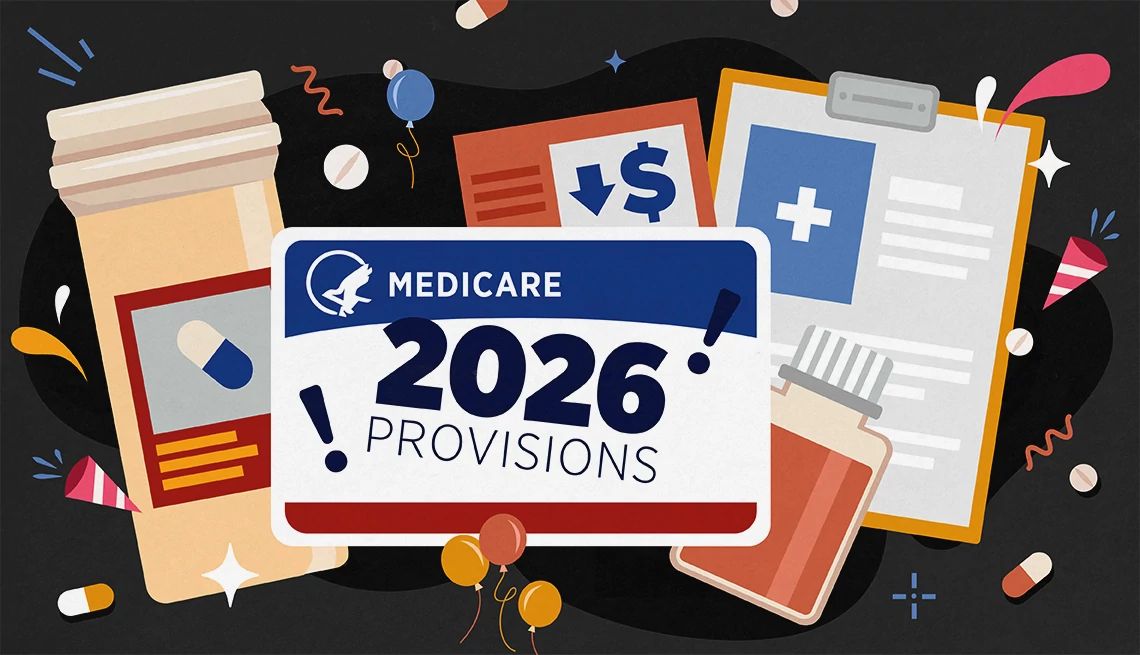AARP Hearing Center
Key takeaways
- You’ll see lower prices on 10 popular high-cost prescriptions.
- Misled by plan finder? You’ll have a chance to change MA plans.
- Drug spending cap rises. Payment plan reenrollment is put on auto.
- Original Medicare begins prior-authorization pilot program.
- Advantage plan pilot shut down; limits added to second program.
The new year will bring a new round of Medicare coverage, cost and policy changes that will affect each beneficiary differently, depending on their medical needs, income and other factors. To help you stay in the know, AARP lists some of the most significant changes that will shape your 2026 coverage.
1. Medicare-negotiated lower drug prices start
Ten prescription drugs with high costs for Medicare will be available at lower prices in 2026.
The first round of these Medicare-negotiated prices, made possible under a prescription drug law passed in 2022 that AARP supported, will help make medications more accessible and affordable. The lower prices for these 10 medications — which include arthritis, blood clot, cancer and diabetes drugs — are expected to improve quality of life for millions of beneficiaries.
The negotiated prices, which become effective Jan. 1, must be made available to eligible Medicare beneficiaries, and the 10 drugs must be included among the covered drugs for all Medicare Advantage prescription drug plans and stand-alone Part D drug plans that beneficiaries in original Medicare can buy.
The savings are expected to lower recipients’ out-of-pocket spending by an estimated $1.5 billion in 2026, and the savings will continue every year. If lower prices had been in effect in 2023, Medicare itself would have saved about $6 billion, the Centers for Medicare & Medicaid Services (CMS) says.
2. Some enrollees may get another chance to switch plans
If you’ve looked at the 2026 Medicare Plan Finder, readied for Medicare open enrollment Oct. 15 to Dec. 7, CMS has included information about which doctors and other health care providers are included in a Medicare Advantage plan’s network.
Now many consumers interested in a Medicare Advantage plan won’t have to leave the plan finder to see if their doctors, hospitals and other health care providers are included in an insurer’s provider network. Previously, potential enrollees had to get that information by visiting each plan’s website, calling each company or enlisting an insurance broker to assist them. Be advised: The provider-directory information is not listed for all plans; new information will be added and updated as CMS receives it.
Enrollees who choose original Medicare can see any physician who accepts Medicare, which is about 98 percent of all doctors who aren’t pediatricians, according to KFF, a nonpartisan health policy nonprofit headquartered in San Francisco with a presence in Washington, D.C.
About half of Medicare beneficiaries have Medicare Advantage plans, the privately run alternative to original Medicare. These plans limit participants to their lists of providers and charge more or require full payment for out-of-network services.
If Medicare Advantage enrollees who used plan finder during their first three months on a new plan discover that its information was wrong and their doctors are not in-network, they’ll be eligible to switch to a plan that has their providers or go to original Medicare during an only-in-2026 special enrollment period. So as soon as coverage begins, you should determine whether the providers you want really do take your insurance.




































































More From AARP
Average Medicare Drug Plan Premium to Drop
Open enrollment for drug, Medicare Advantage plans begins Oct. 15
Medicare Part B Premium May Top $200 in 2026
Possibility could squeeze finances for older adults on fixed incomes
10 Surprising Things That Medicare Doesn't Cover
You should plan to pay for some common medical expenses